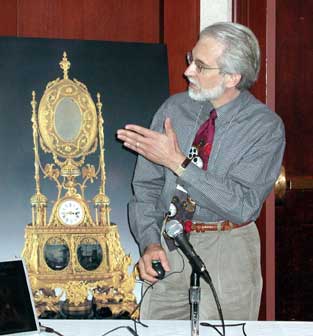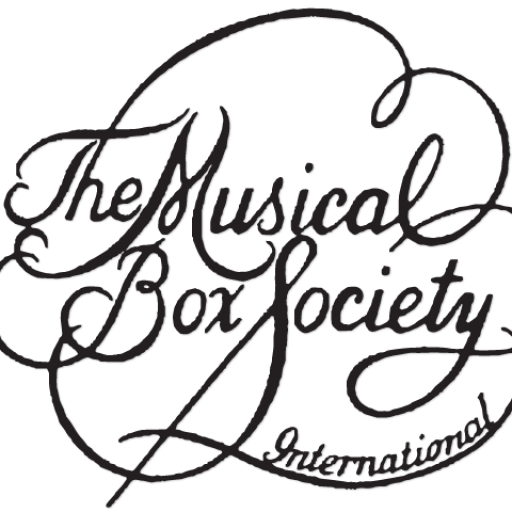
Repairing Automatic Musical Instruments
We are often asked about repairing music boxes and pneumatic instruments. The cost to do so will vary, depending upon the condition of the item, and that cost may exceed the box’s value in the case of modern music boxes. However, when a strong emotional connection exists, repair cost may be a minor consideration. More elaborate pneumatic instruments or antique music boxes are almost always worth repairing, unless damage to them is extremely severe.
Most musical movements can be repaired, especially if the musical comb is intact. A competent repair specialist can substitute parts or make new ones, if original spare parts are unavailable. If the musical movement is beyond salvage, it can be replaced with a new movement from one of the modern manufacturers, often with a tune of the owner’s choosing.
If an antique music box has suffered a run (when the governor controlling the unwinding of the spring motor disengages, allowing the cylinder to spin rapidly and violently), as evidenced by broken comb teeth or bent cylinder pins, this damage can be repaired by tooth replacement (or, if luck is with you, a substitute comb) and pin straightening by a skilled technician.
If your instrument needs repair or servicing, please consult the MBSI web site links page to find a qualified technician as near to you as possible. Some specialize in the repair of certain types of instruments, such as cylinder or disc music boxes, bird boxes and whistlers, mechanical organs, and automata. Our links page also lists dealers who buy and sell instruments as well as people who repair and restore almost the entire range of automatic musical instruments.
If there is no service technician conveniently near to you, it may be wiser to ship the instrument to one more distant than to entrust it to a person not accustomed to working with these rather specialized machines. In cases where you feel the need of a consultation but find no one nearby to consult, we may be able, by the use of our Member Directory, to refer you to a collector in your area who has experience in the care and operation of your type of instrument and whose advice may help you to find the best technician for your needs.
Tune Availability
Some people have a favorite tune that they would like to have their musical instrument or box play. In the case of a pneumatic roll-playing instrument, this is generally feasible, because there are arrangers and roll makers for instruments, large and small, who can produce an arrangement of the tune of your choice. However, in the case of cylinder music boxes this is more difficult.
Both Reuge, the sole surviving Swiss music box maker of the many that existed in the 1800’s and 1900’s, and Sankyo, a Japanese manufacturer, maintain an inventory of stock tunes on pinned cylinders, from the smallest 18-note novelty movement size to more musical 50-note movements. Sankyo’s tune list is believed to be more extensive than Reuge. But even still, considering the millions of tunes that have been composed over the centuries, your chances of finding in stock the one particular tune of your heart’s desire are slim indeed.
Reuge will custom pin cylinders with the tune of a customer’s choice, assuming the tune is suitable for arranging for a limited musical scale and for a playing time of short duration. Arranging costs are significant, and Reuge requires a minimum order for custom work. These factors price the work beyond the average person’s budget.
An alternative worth exploring is a little 20-note, hand-cranked musical movement played by a punched paper strip. It is made by Sankyo and is available for around $60 from at least one MBSI member/dealer. It comes with five pre-punched strips, two blank strips, a hole punch, and instructions on arranging your own tunes for it to play.
What is not a music box?
Just as installing a CD system in your automobile does not change its essential nature as a car, installing a small novelty-type musical movement in a cigar box does not make your cigar box a music box.
The MBSI is not able to tell you much about any collectible item into which the item’s manufacturer has installed a small musical movement obtained from one of several makers. The place to go for information on those collectibles — be they furniture, ceramic items, stuffed toys, jewelry boxes, or whatever — is the group, magazine, or collectors’ club which is interested in the item used to house the musical movement.
There are exceptions to this rule. Musical Christmas tree stands is one such exception as are Lador powder boxes and musical photo albums. Boxes and watches sold under the Reuge name are usually worth repairing as are those made by Sankyo. There are a few others but by and large, when the significance of the musical aspect is far outweighed by the importance of its housing, the object in question falls outside the focus of the MBSI.
Collecting mechanical music
Mechanical music was everywhere from about 1750 to about 1920 and is still being manufactured today. With so many of the existing antique pieces now in museums and private collections, is it still possible to build a collection of instruments? The answer is a resounding “YES”! Old mechanical music instruments constantly come into the marketplace through auctions, private dealers, estate sales, flea markets and through the marts of collector organizations.
There are many ways to collect mechanical music: You can try to collect one of each type of mechanical music instrument (not an easy task, and one that requires lots of space to store them). You can specialize in one type of mechanical music such as cylinder or disc music boxes, band organs, mechanical organs, musical automata or snuff boxes or any one of dozens of types of mechanical music instruments that can still be found today. Collections can also be built around mechanical music novelties such as cigarette lighters that play a tune, ladies’ powder boxes with music, musical children’s toys known as manivelles and even toilet paper rollers with built-in mechanical music. With an abundance of literature related to mechanical music, interesting collections of those items alone can be accumulated. Many of these items continue to be available at reasonable prices. When assembled into a collection, they present a fascinating picture of society as it was during the object’s heyday.
One thing you should know: Just as in every other collecting category, the best pieces at the fairest prices go to those who have the patience to study the field. You should read books, join the MBSI and become somewhat knowledgeable before setting out on a buying spree. By joining a collector organization, you will have the opportunity to use its library, to learn from its experts, to see the members’ collections, and to participate in all the fun and joy of exploring this fascinating field. After you have learned something about mechanical music and decided what you want to collect, you will have many opportunities to find or purchase an example for yourself and to enjoy its musical performance over and over again.
Seeing and hearing mechanical music instruments: True museums of mechanical music are few and far between and usually in remote places. Moreover, with some notable exceptions, instruments are not usually accessible and/or not restored, and their music cannot be heard. Most of the world’s finest examples of mechanical music are in private collections or private museums, and are not readily available to the general public. Collectors of mechanical music do, however, have access to these amazing artifacts through collector organizations. Among the most notable are the Musical Box Society International (MBSI) headquartered in the United States, the Music Box Society of Great Britain (MBSGB) in England, the Gesellschaft für Selbstspielende Musikinstrumente (GSM) in Germany and the Association des Amis des Instruments et de la Musique Mécanique (AAIMM) in France. There are also similar smaller organizations in many other countries and a chapter of the MBSI in Japan.
One of the common characteristics of these organizations is that their members make their collections available to other members. Thus collectors can see and hear a variety of instruments far beyond anything available in any single museum or even groups of museums anywhere in the world. If learning about the field of mechanical music is of interest to you, consider joining one of the above mentioned societies. The cost is low and the rewards in terms of knowledge, pleasure and human relationships, are high! A listing of collector organizations whose focus is on mechanical music can be found under links.
